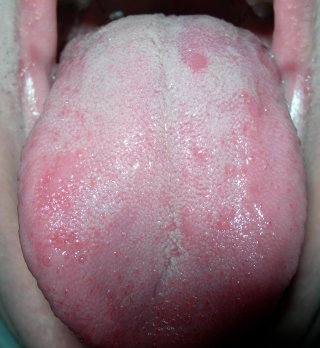ACKNOWLEDGMENTS
Thanks to P Bucknam for assistance in the field relocating the Bird Quarry and to J. Lillegraven for discussions about the site. Thanks also to J. Farlow, M. Lockley, and M. Miller for their reviews of the manuscript. The Bird Quarry is on land administered by the Bureau of Land Management.
REFERENCES
BRADLEY, W. H. 1964. Geology of the Green River Formation and associated Eocene rocks in south-western Wyoming and adjacent parts of Colorado and Utah. United States Geological Survey Professional Paper 496-A, 86 p.
CONANT, R., AND J. T. COLLINS. 1991. A Field Guide to Reptiles and Amphibians, Eastern and Central North America. Houghton Mifflin Company, Boston, 450 p.
ESTES, R. 1981. Gymnophiona, Caudata. Encyclopedia of Paleoherpetology, Pt. 2. Gustav Fischer Verlag, New York, 115 p.
EVANS, F G. 1946. The anatomy and function of the foreleg in salamander locomotion. Anatomical Record, 95:257-281.
FEDUCCIA, A. 1978. Presbyornis and the evolution of ducks and flamingos. American Scientist, 66:298-304.
GILMORE, C. W. 1928. Fossil footprints from the Fort Union (Paleocene) of Montana. United States National Museum Proceedings, 74(5):1-4. HOLROYD, P. A., D. M. ERWIN, AND J. H. HUTCHISON. 1997. Non-mam
malian paleontology of the Wasatch Formation in the northern Green River Basin, Wyoming. Geological Sociey of America Annual Meeting, Abstracts with Programs, p. A104-A105.
JOHNSON, K. R. 1986. Paleocene bird and amphibian tracks from the Fort Union Formation, Bighorn Basin, Wyoming. Contributions to Geology, University of Wyoming, 24:1-10.
LINNAEUS, C. 1758. Systema Naturae (tenth edition). Stockholm, Volume 1, 824 p.
LocKLEY, M. G., AND A. P. HuNT. 1995. Dinosaur Tracks and Other Fossil Footprints of the Western United States. Columbia University Press, New York, 338 p.
McGRaw, P 0. 1980. An Eocene flamingo nesting area, Sweetwater County, Wyoming. National Geographic Society Research Reports, 12: 473-478.
McGREW, P O., AND A. FEDUCCIA. 1973. A preliminary report on a nesting colony of Eocene birds. Wyoming Geological Association Guidebook, Twenty-fifth Field Conference, p. 163-164.
NAYLOR, B. G., AND D. W. KRAUSE. 1981. Piceoerpeton, a giant early Tertiary salamander from western North America. Journal of Paleontology, 55:507-523.
OLSON, S. L., AND A. FEDUCCIA. 1980. Presbyornis and the origin of the Anseriformes (Aves: Charadriomorphae). Smithsonian Contributions to Zoology, n. 323, 24 p,
OPPEL, M. 1811. Die Ordnung, Familien and Gattungen der Reptilien als Prodrom einer Naturgeschichte derselben. Munchen, Lindar, 12:1-87. PEABODY, E E. 1954. Trackways of an ambystomid salamander from the Paleocene of Montana. Journal of Paleontology, 28:79-83.
PEABODY, F E. 1959. Trackways of living and fossil salamanders. University of California Publications in Zoology, 63:1-72.
ROEHLER, H. W. 1991. Revised stratigraphic nomenclature for the Wasatch and Green River Formations of Eocene age, Wyoming, Utah, and Colorado. United State Geological Survey Professional Paper 1506-13, 38 p.
SIMNACHER, F 1970. Stratigraphy, depositional environments, and paleontology of the Cathedral Bluffs Tongue of the Wasatch Formation, Parnell Creek area, Sweetwater County, Wyoming. Unpublished master's thesis, University of Wyoming, 101 p.
TIHEN, J. A. 1958. Comments on the osteology and phylogeny of ambystomatid salamanders. Bulletin of the Florida State Museum, Biological Sciences, 3:1-50.
WEST, R. M., L. KRISHTALKA, C. C. BLACK, M. R. DAWSON, J. J. FLYNN, W. D. TURNBULL, R. K. STUCKY, M. C. McKENNA, T. M. BowN, D. J. GoLz, AND J. A. LILLEGRAVEN. 1987. Eocene (Wasatchian through Duchesnean) biochronology of North America, p. 77-117. In M. 0. Woodburne, (ed.), Cenozoic Mammals of North America. University of California Press, Berkeley.
YANG, S. Y., M. G. LOCKLEY, R. GREBEN, B. R. ERICKSON, AND S. K. LIM. 1995. Flamingo and duck-like bird tracks from the Late Cretaceous and early Tertiary; evidence and implications. Ichnos, 4:21-34. ACCEPTED 15 DECEMBER 2000
JOHN R. FOSTER
Department of Geology & Geophysics, University of Wyoming, Laramie 82071-3006 (current address: Museum of Western Colorado, PO. Box 20000, Grand Junction 81502)
Copyright Paleontological Society Jul 2001
Provided by ProQuest Information and Learning Company. All rights Reserved



